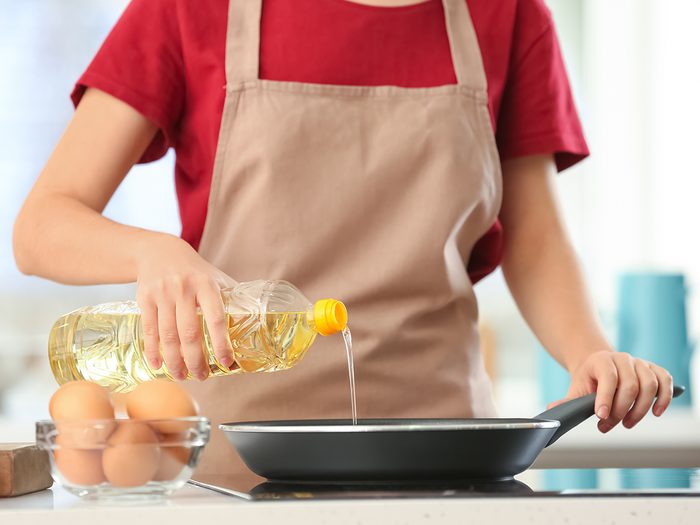
Putting oil into a cold pan
What’s the single biggest cooking mistake made in kitchens across Canada? According to Donna Dooher, executive chef and owner of Mildred’s Temple Kitchen in Toronto, it’s our tendency to add the fat (usually butter or oil) to a pan before it’s hot. “Never put any ingredients into a cold pan,” Dooher says. Adding butter or oil to a hot pan ensures a good sear, and helps prevent food sticking to the pan.
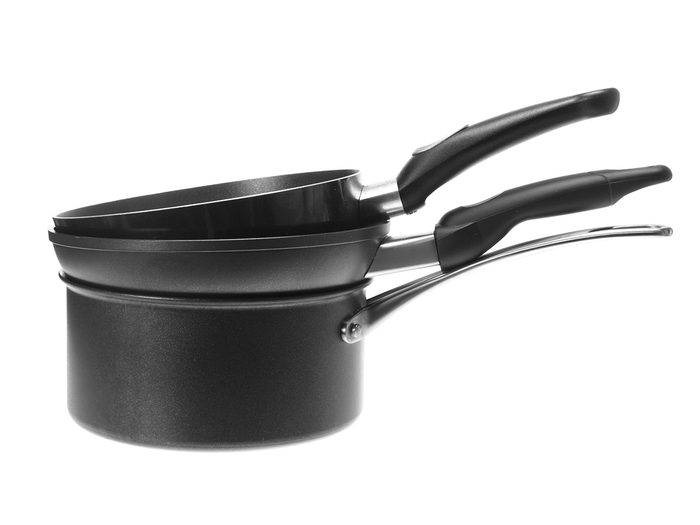
Buying the wrong pans
It might be convenient to buy a boxed set of pans for your kitchen, but according to Dooher, this is another common cooking mistake. Her advice is to avoid the pre-fab set—many pieces of which you won’t use regularly—and instead build your own custom collection. Choose individual pans that are suited to your personal cooking needs, and make sure they’re made from either heavy-duty stainless steel or cast iron: both materials are incredibly durable and retain and conduct heat well.
Not getting the results you want? Here are the kitchen appliance mistakes you didn’t know you were making.
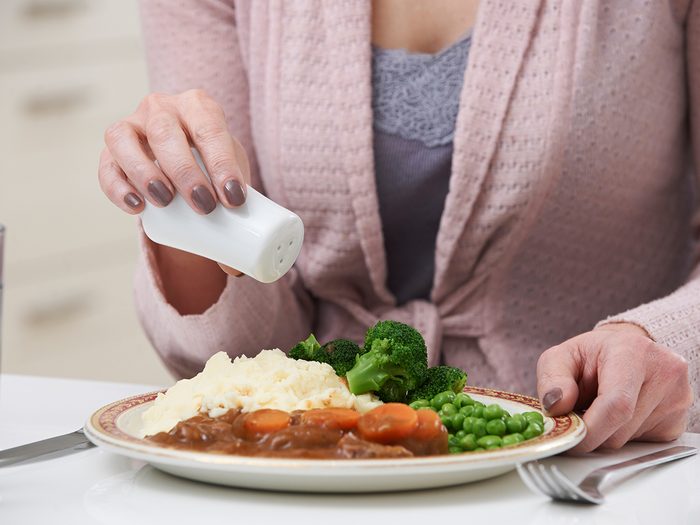
Adding salt after cooking
Salt is a flavour enhancer and will draw out the flavours of other ingredients in your dish—if, that is, you add it to your dishes while you’re cooking them. Adding salt after a dish is cooked merely adds a salty flavour. Another benefit of sprinkling salt during meal prep is that it ensures the salt is distributed more evenly and gives the food adequate time to absorb it. To avoid over-salting, be sure to taste while you cook.
Discover the secret ingredient for the best beef stew.
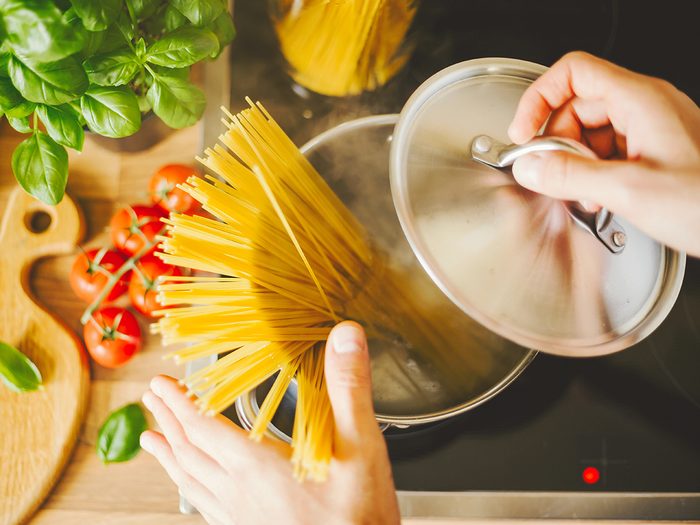
Cooking pasta in a tiny pot
Nothing ruins a plate of pasta like finding your noodles all clumped together or soggy. Often times, the culprit behind this cooking mistake is a pot that’s too small for the amount of pasta you’re making. The reason? When you add a large amount of uncooked pasta to a tiny pot of water, the temperature of the water drops significantly. The clumps form as the water temperature slowly creeps up to boiling again. Always follow package directions not only for cooking time, but also for the amount of water—the level of which should be well over the pasta even once it’s cooked.
Here’s how to make store-bought pasta sauce taste homemade.
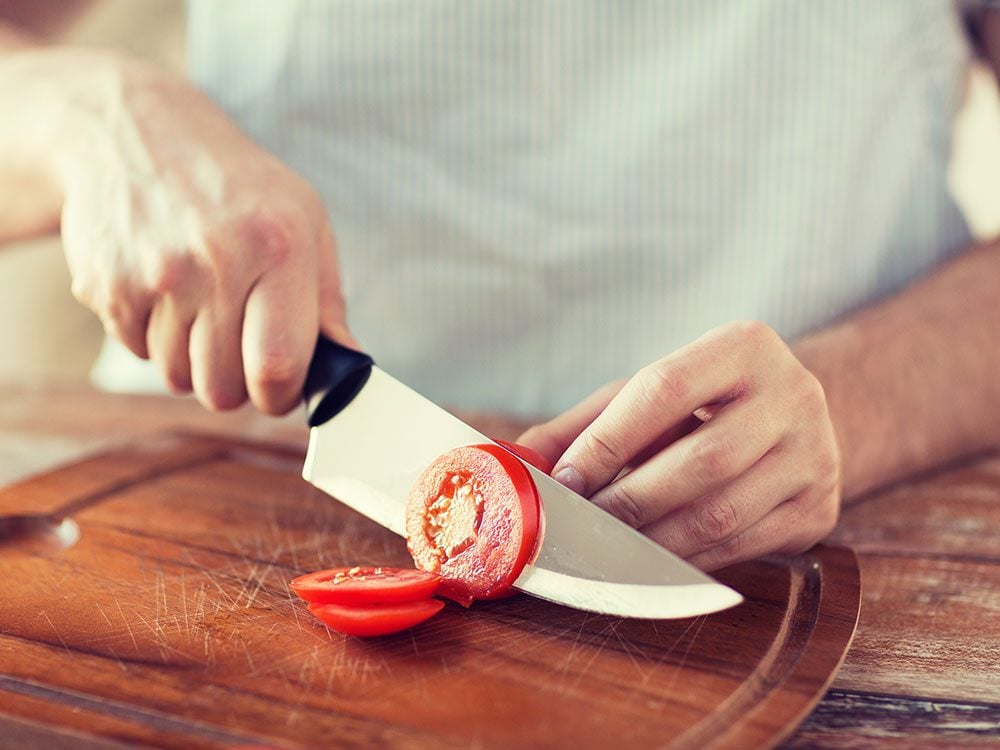
Using dull knives
What’s the problem with a dull kitchen knife if it still cuts through what you need it to? For starters, a dull knife is actually more dangerous than a sharp one: They require more pressure to make cuts, which gives you less control over the blade. Secondly, a sharper knife means cleaner cuts, allowing fresh produce to retain more of their moisture and flavours.
Don’t miss the cutting board hacks every home cook needs to know.
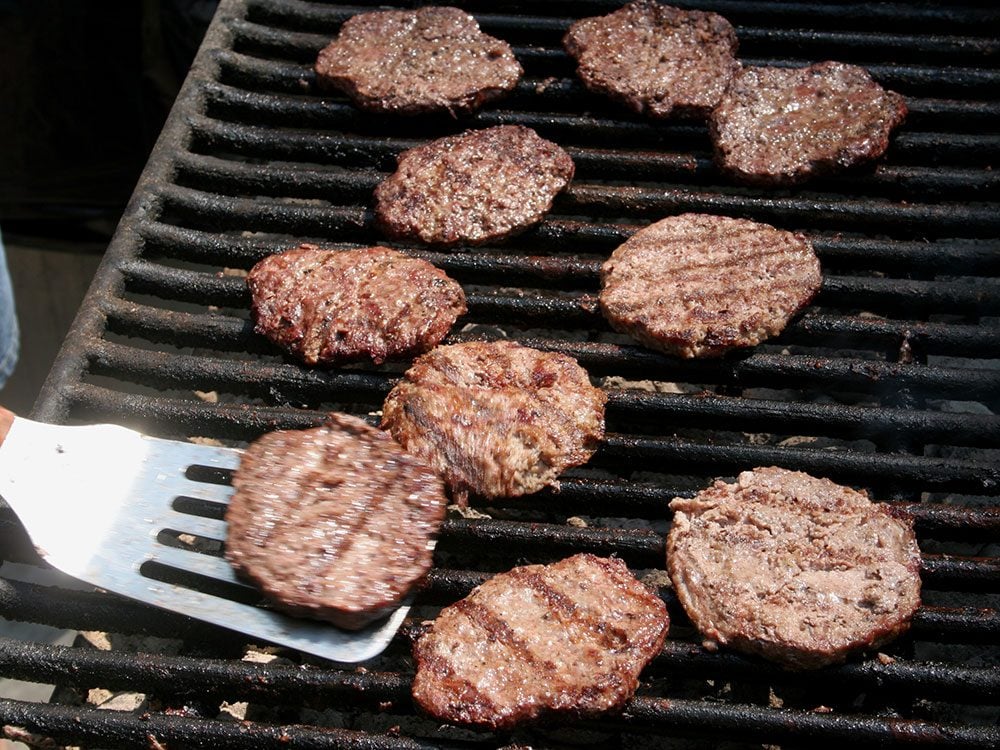
Flipping meat too soon (and too often)
There’s something about standing in front of the sizzling barbecue that makes guys feel the need to constantly shuffle hamburger patties around the grill. According to Dooher, there should be no need—ever—to scrape meat from a cooking surface. This rule applies whether you’re cooking delicate fish or a thick steak, on a stovetop or barbecue. “When a protein is ready to get flipped, it’ll release from the pan easily,” Dooher says. “If it’s sticking, it’s not ready.”
Find out 13 grilling mistakes that could actually make you sick.
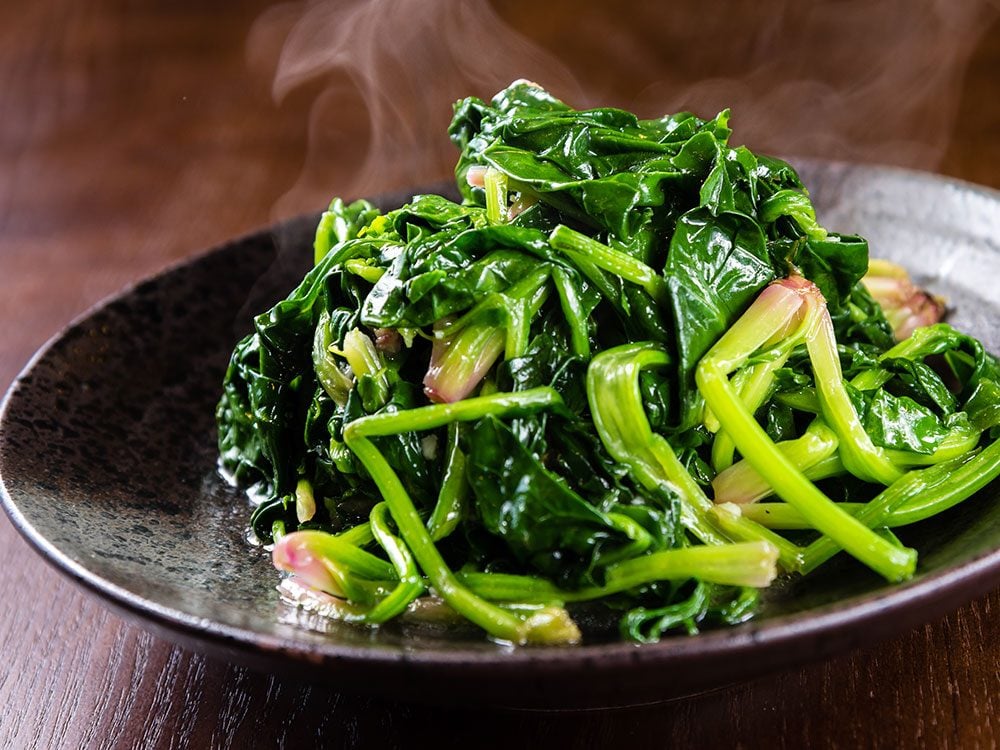
Cooking wilted leafy greens
Many home cooks can’t quite get their stir-fried leafy greens to come out the way they do in restaurants—hearty and bright, rather than clumped together and dark. The reason is likely two-fold: the greens may have already wilted in the fridge, and then they’ve been cooked in a pan that’s simply too small. To refresh refrigerated kale, chard and other leafy greens that have wilted, trim the stems and stand them in a jar of cold water. Stir-fry them in a good-sized pan (such as a work or skillet) will ensure that the greens actually do fry, rather than steam—which is often the fate of greens that aren’t in direct contact with the surface of the pan.
Next, discover five cooking mistakes that sabotage a healthy meal.